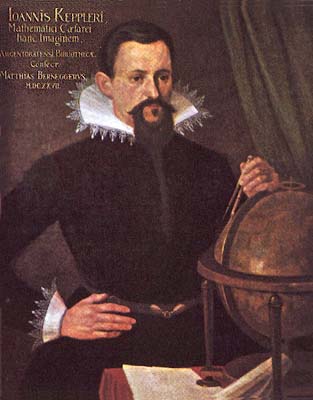
Johannes Kepler (1571-1630)
For more information on Kepler's Laws:
More
on Kepler's Laws
from Central Valley Christian School
Keplers Laws of Planetary Motion
1st Law: Planets orbit the Sun in an elliptical Path with the Sun at one focus.

2nd Law: An imaginary line connecting the Sun to any planet sweeps out equal areas ot the ellipse in equal intervals of time.

3rd Law: The square of a planet's orbital period is propotional to the cube of its semi-major axis. Mathmatically this can be stated as
where P = orbital period in years,
and a = semi-major axis in AUs.
(AU stands for astronomical uiit. One AU is the average Earth-Sun distance.)
